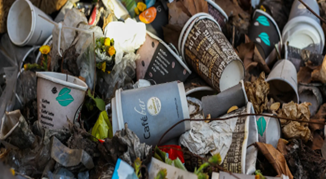Littering is a harmful problem that affects our environment, our wildlife, and our economy. To promote a cleaner planet, we must be able to explore effective strategies to stop littering as well as understanding the reasons behind why people litter.
Litter is best described as waste products that have not been properly disposed of. It contributes to land pollution, air pollution, and water pollution which is extremely dangerous to the environment and our daily lives. So why do people litter? There are many reasons as to why people litter such as:
- Lack of awareness – Some people may not comprehend the consequences of littering. They might not see the damage it does to the environment or public spaces. This leads to a mindset that littering is acceptable.
- Inconvenience – The lack of trash disposal options influences people to litter. When there are few trash cans or are overflowing or just poorly placed, people are less likely to discard trash properly.
- Presence of litter already there – People can be influenced by the behaviors of people around them so if someone observes others littering without repercussion, they may feel comfortable to do the same. This can be especially true in settings where peer pressure is a factor.
- Lack of consequences – Some people may live in communities that have normalized littering which could be due to lack of environmental education or having no repercussions for littering.
- Laziness and carelessness – The people who litter out of laziness or carelessness often think that others will come along and pick up the litter to dispose of it properly. Or the person might have a sense of disconnection from the environment which can lead to carelessness for public spaces and less respect for their community.
What are the consequences of littering? Litter can affect innocent animals every day. Researchers approximate that almost 12 million tons of plastic waste finds its way into the ocean every year. With that over 100,000 marine animals die from becoming entangled or digesting plastic litter. As well as over one million animals dying from trash each year.
60% of water pollution is because of litter while 40% of litter is burned into the air which causes health problems from the toxic emissions released into the air. The chemicals in litter can also poison the soil around plants killing those plants that grow there. It can also poison water, harming the wildlife that lives in that area.
Litter can also spread diseases, viruses, and parasites through direct and indirect contact. The spread of bacteria would pose serious health risks to humans and the environment. Littering in schools can not only cause health risks due to improperly disposed food which can breed bacteria and insects, but it is also a distracting site which could damage school morale and pose mental health problems. Like most places, litter is found at schools and can be unhealthy for the students attending those schools.
But we cannot rely on others to solve this issue. We must work together. As environmental activist Robert Swan said, “The greatest threat to our planet is the belief that someone else will save it.” We all have a responsibility to protect our planet, which means keeping our planet clean and safe.
What are some things that we can do to reduce littering? There are numerous ways to reduce littering such as:
- Educate others on the problem of littering – Implementing educational programs can increase awareness of the problem of littering and its effects on the environment. Installing values of environmental responsibility can create a more aware population. Programs that teach children about their environment and sustainability can develop lifelong respect for their environment. Schools, communities, and governments can emphasize the importance of keeping public spaces and our environment clean.
- Increase the number of trash cans – Communities need to ensure that trash and recycling bins are abundant, well placed, and emptied regularly. Making sure that public spaces have an adequate amount of trash cans can drastically reduce litter.
- Community engagement – Communities can introduce programs that encourage and reward people for cleaning up litter. As well as enforcing penalties for littering, it can make people stop disposing of trash improperly. Communities can also organize clean-up events to help promote a sense of responsibility towards your environment. People can also engage in programs like ‘Adopt a Highway’ and ‘Great American Clean-up’ which are programs where you volunteer to clean up litter. In a KAB litter study in 2020, it estimates that litter on roads is down 54% since 2009.
Littering is a complex behavior rooted in our awareness, convenience, and community dynamics. Though with a thorough education, community engagement, and improved trash management systems, we can create a community of cleanliness and respect for our environment.








